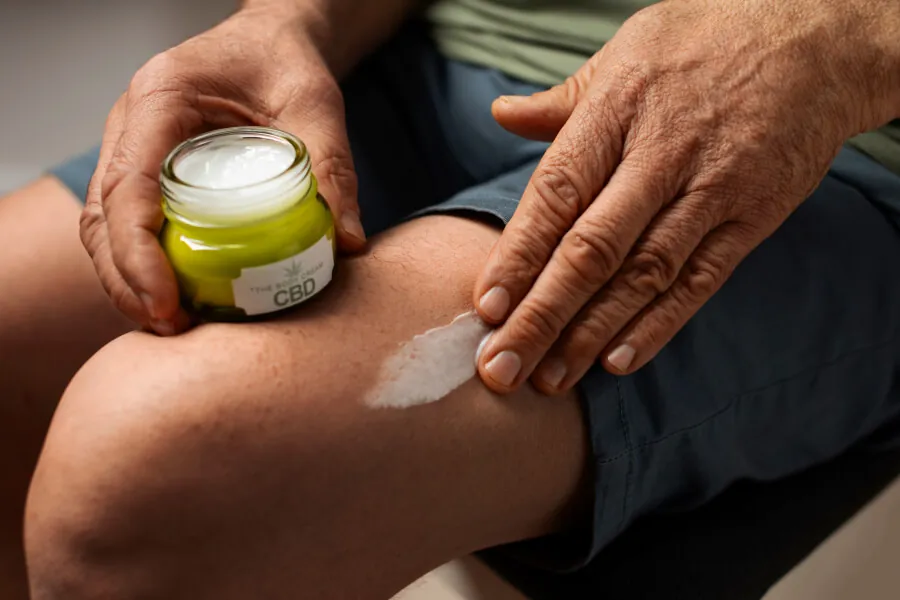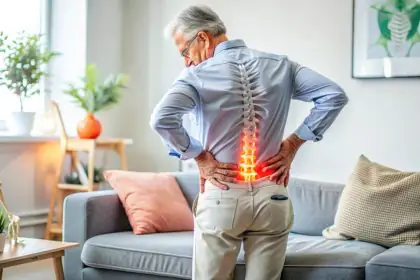Knee pain Relief can be easy to make, but it needs consistency.
Knee pain can be caused by a variety of factors, including:
Acute injuries such as:
- Sprains
- Strains
- Ligament
- Meniscus tears
- As well as fractures.
Chronic conditions such as:
- Arthritis
- Both osteoarthritis
- Rheumatoid arthritis
- Gout can also contribute to this discomfort
Overuse of the knee, whether from sports, excessive work, or repetitive activities, can also trigger pain.
Postural problems, such as poor alignment, flat feet, or muscular imbalances, and the natural aging of the joints are also significant factors.
Less Common but Significant Causes
In addition to common causes, medical conditions such as:
- Obesity
- Diabetes
- Autoimmune diseases can contribute to knee pain.
Symptoms of Knee Pain
Common symptoms include:
There may also be cracking or popping when moving the joint.
Symptoms That Could Indicate a More Serious Condition
Symptoms such as:
- Intense redness
- Severe swelling
- Inability to bear weight on the knee
- Fever and persistent pain even at rest could indicate a severe injury that requires immediate medical attention.
8 Remedies from Grandma’s Book
Rest: It is essential to rest the knee to allow for recovery. Avoid activities that cause pain.
Ice: Apply cold compresses wrapped in a towel for 15-20 minutes several times a day to reduce inflammation.
Hot packs: Once the initial inflammation has subsided, apply hot packs to relax the muscles and improve circulation.
Elevation: Keep the knee elevated above heart level to reduce swelling.
Bandage: An elastic bandage or knee brace can provide support and reduce pain.
Gentle exercise: Perform low-impact exercises such as swimming or cycling to strengthen the muscles and improve flexibility once the acute pain has subsided.
Weight loss: Even losing a small amount of weight can alleviate pressure on the knees if you are overweight.
Anti-inflammatory diet: Consume foods rich in omega-3, such as fish, nuts, and seeds, and limit processed foods, sugary foods, and red meats.
When to Seek Medical Attention
It is crucial to contact a professional if you experience severe swelling, intense redness, fever, persistent pain, or difficulty moving the knee.
Home Treatments and Care
Recommended over-the-counter medications: Ibuprofen, acetaminophen, or naproxen can help reduce pain and inflammation.
Strategies to relieve pain and inflammation at home: In addition to ice and hot packs, you may consider using topical creams for pain containing capsaicin or menthol.
Exercises and therapies to strengthen the knee pain relief: Physical therapy can be beneficial for strengthening the muscles and improving knee pain relief flexibility.
Can Knee Pain Be Prevented?
While some knee injuries may be unpredictable, measures can be taken to reduce the risk of injury, such as warming up before physical activity, wearing appropriate footwear, avoiding sudden movements, and maintaining good form during physical activities. Strengthening the muscles surrounding the knee and maintaining a healthy weight can also help prevent injuries.
Tips for Avoiding Injuries and Keeping the Knee Healthy
Maintain a healthy weight, practice low-impact exercises regularly, and wear appropriate footwear for your activity.
Risk Factors and Complications
Factors that can increase the chances of knee pain: Obesity, aging, and previous injuries can increase the risk of developing knee pain.
Potential complications if not treated properly: Lack of proper treatment can lead to decreased mobility and quality of life, as well as the progression of underlying conditions such as arthritis.
Summary
In this blog, we have explored the main causes of knee pain relief, from acute injuries to chronic conditions such as arthritis. We have presented 8 effective remedies for knee pain relief inspired by traditional wisdom to relieve this discomfort, highlighting the importance of rest, the use of cold and hot compresses, gentle exercises, and an anti-inflammatory diet. Additionally, we have provided answers to frequently asked questions about the treatment and prevention of knee pain relief, providing our readers with valuable information to care for their joint health.
FAQs
What is good for knee pain relief?
For knee pain relief, you can apply cold or hot compresses, take over-the-counter pain relievers such as ibuprofen or acetaminophen, use topical creams for pain containing capsaicin or menthol, and perform gentle stretching and strengthening exercises.
What is the best anti-inflammatory for the knee?
The best anti-inflammatory for the knee pain relief may vary depending on the cause and severity of the pain. Nonsteroidal anti-inflammatory drugs (NSAIDs) such as ibuprofen, naproxen, and diclofenac are commonly prescribed to relieve pain and inflammation in cases of knee injuries, arthritis, and other inflammatory conditions.
What diseases can cause knee pain?
Several diseases can cause knee pain, including arthritis (such as osteoarthritis and rheumatoid arthritis), gout, patellar chondromalacia, patellar tendinitis, bursitis, Osgood-Schlatter disease, knee fractures, and other musculoskeletal disorders.
When is knee pain concerning?
Knee pain is concerning when it is intense, persistent, limits the ability to perform daily activities, worsens over time, or is accompanied by symptoms such as swelling, redness, tenderness, fever, or difficulty moving the knee.
When should you consult an orthopedic surgeon for knee pain when climbing stairs?
It is recommended to consult an orthopedic surgeon if you experience knee pain when climbing stairs and this pain persists for more than a few days, is intense, limits your ability to perform daily activities, or if it is accompanied by other symptoms such as swelling, redness, or tenderness.





